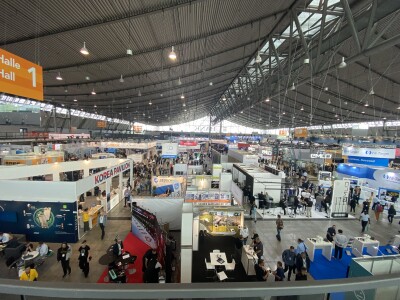This past week saw a pair of big announcements from two relatively new organizations in which Geo Week News have taken keen interest since their forming. First, the Overture Maps Foundation (OMF), officially formed at the end of 2022, announced their first general release of their open map data, along with a new “explorer” tool and a new address theme for their maps getting an alpha release. Then, shortly after, the Alliance for OpenUSD (AOUSD), a group formed not long after OMF, announced new members of their organization along with a few new working groups within the alliance. Notably, those new members included massive companies like Microsoft and Sony, and one of the new working groups is specifically focused on USD’s value for the AEC industry.
While there isn’t a lot of surface-level crossover between these two organizations, they each relate heavily to the industries we cover at Geo Week News. OMF is dedicated to creating a database of open map data with contributions from a number of different sources and major companies. Similarly, AOUSD has a mission of expanding the usage and acceptance of the Universal Scene Description for the burgeoning 3D ecosystem. Keeping these missions in mind, each of the organizations’ respective announcements were significant ones on their own merit. Their close proximity together also piqued my interest in an apparent broader trend.
While these two organizations have distinct different missions and largely serve different audiences – though with some slight overlap in member companies – even aside from each addressing areas of interest to us at Geo Week News, they also both include some of the biggest companies in the world coming together for a common cause. On the OMF side, the founding companies were Meta, Amazon Web Services, TomTom, and Microsoft. For AOUSD, Pixar, Adobe, Apple, Autodesk, and NVIDIA make up the founding members.
These are nine of the biggest and most recognizable brand names on the planet, and it seems monumental that they are coming together for common causes, and doing so with early success. To that point, it's worth noting that both organizations were founded by the Linux Foundation, a group that specializes in this kind of cross-industry collaboration.
This is certainly not to imply that we are entering an era in which large companies will come together for an extended “kumbaya.” These are still massive companies who will look to dominate their markets to whatever extent possible, and are looking to maximize profits. However, it certainly seems like openness in platforms is becoming a tenant of industries – even a company like Apple, who is generally not known for championing open platforms, is heavily involved with AOUSD. To further the openness point, just this week, Meta released their Llama generative AI product as an open source release. More specifically to our interests, we’ve written recently about trends in the AEC industry around big companies joining together for partnerships and integrations.
It’s worth noting that not everyone agrees with my perceptions around this trend. In a conversation earlier this year with TomTom’s Mike Harrell about the development for OMF, I mentioned this thought around both AOUSD and OMF being formed around the same time. When asked if he believed it was indicative of a greater trend, he didn’t commit to that being the case and said he was inclined to think it was more of a coincidence. His thought is that the need for open map data has become so obvious to big companies that the organization was a natural creation.
None of that is wrong, of course, but I think it points to a larger trend. Technology only becomes more complex, and at a certain point it’s nearly impossible for any one organization to do everything well. This is particularly true in industries like geospatial, 3D, and AEC. For the latter, as we’ve noted, the tools for the industry had become so disparate that more connection and integration was necessary. With geospatial and 3D, democratization in both spaces have grown the tent for these companies, leading to more companies with new interests and areas of expertise entering the sector. Everyone benefits from getting new perspectives under the umbrella.
Recently, I had a chance to speak with OMF’s Executive Director Marc Prioleau for a yet-to-be-published story. While we didn’t speak about this particular trend, there was one piece of the conversation that stood out as relevant to this discussion. Talking about the different engineers that come together for OMF – the way the organization works is that member companies “lend” engineers to projects in a collaborative effort – Prioleau noted the energy that comes with working with new teams and with “peers,” in an environment with no real hierarchy.
Again, none of this is to suggest we are in a new era of business in which openness and collaboration is going to preempt a desire for profit and market share. However, particularly for industries like geospatial, technology is becoming increasingly complex and use cases are growing at a rapid pace. As these trends continue, it’s going to become a losing bet to think any one company will be able to serve all needs, and those who recognize the benefits open collaboration should be the ones who thrive.






